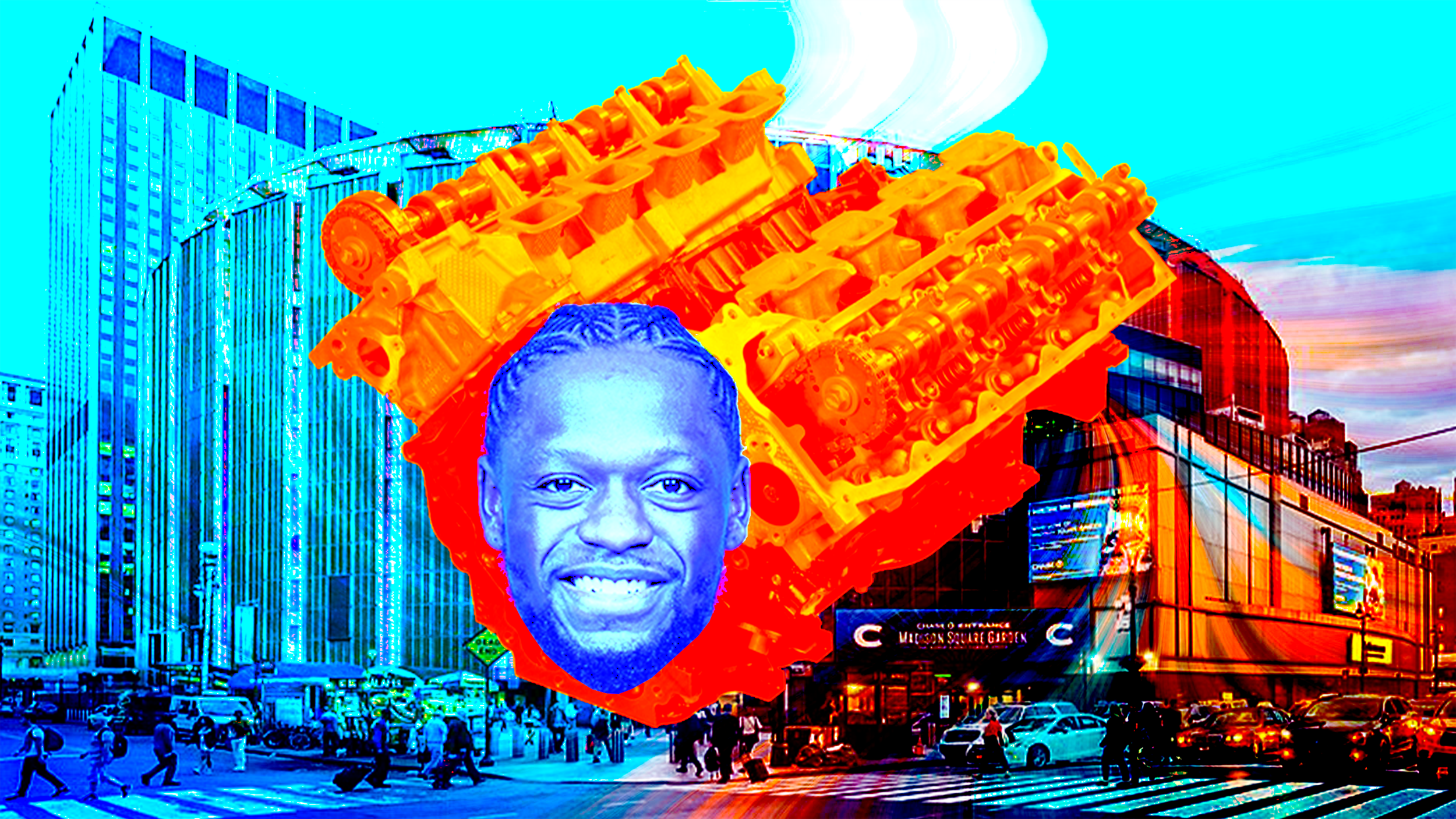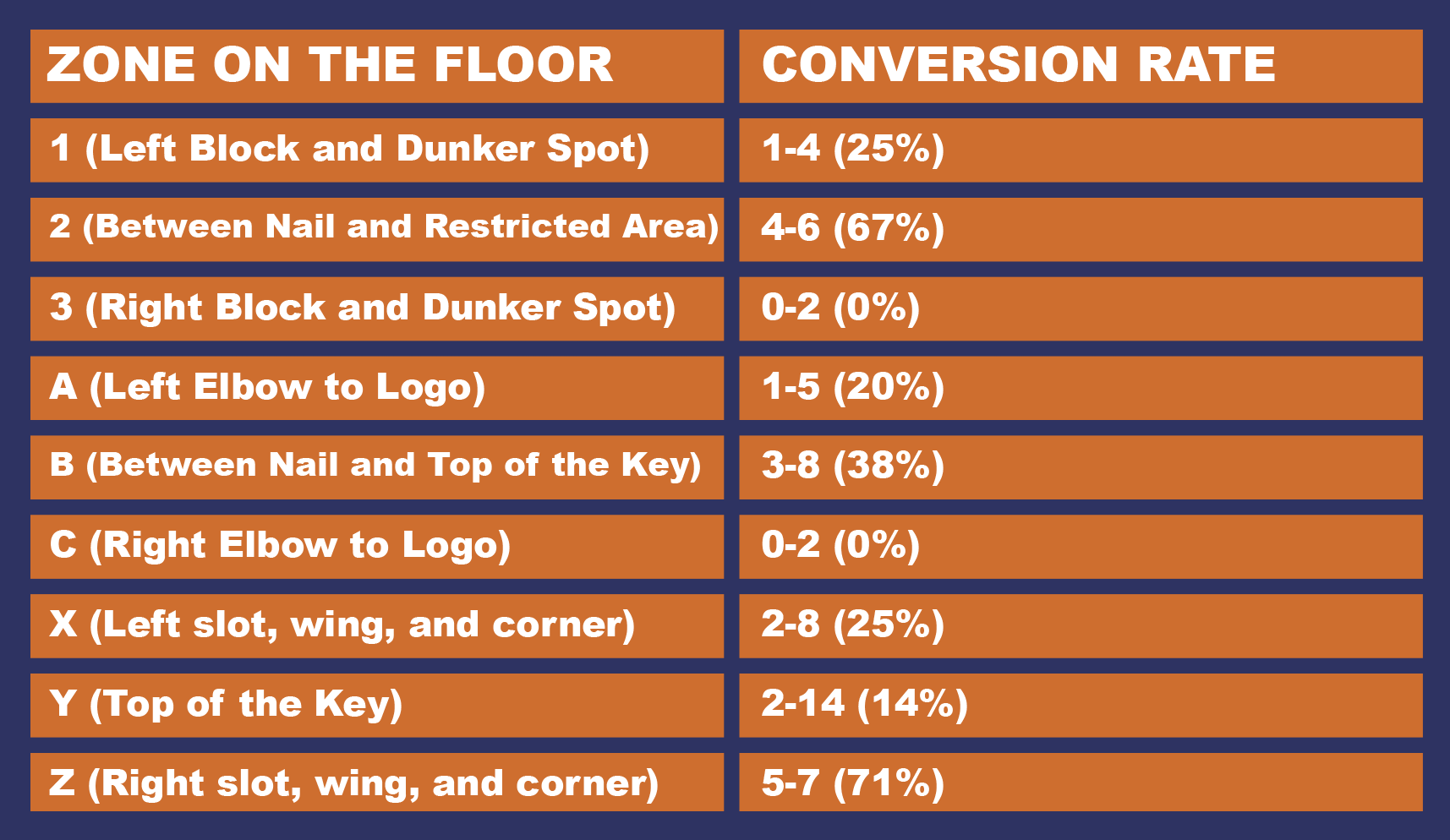Point Randle possibilities: How to make the most of New York’s most-used player
Julius Randle’s struggles so far this season have been well-documented, but could some of his issues lie in how and where he’s being used on the court, and how and where his teammates are receiving passes from him? Could the way to save the Knicks’ season actually be to use Randle more?
I understand that some people will struggle to even get past the headline of this article. Julius Randle is the de facto face of the franchise and also an immediate turn-off to certain fans.
If you overcame that gut reaction and clicked on this article anyway because you trust that the fine folks here at The Strickland wouldn’t publish something without merit, wait until you read the next thing I hit you with.
I believe that Julius Randle can be a ball-dominant player on a highly successful team.
Buckle up, Buttercup…
There’s a piece of data I discovered recently that opened my eyes to what the Knicks have in Randle. The assumption with Randle is that he cannot be the first option on a championship team.
Great guy. Strong second (or third) option. Not a winner.
I dug into that idea, and what I found shocked me. There are two criteria that must both happen for the Knicks to win at a high level with Randle as the centerpiece.
First, he must have a usage rate of at least 31%. The only high-volume players in the NBA right now with a usage rate of at least 31% are (in order) Luka Doncic, Joel Embiid, Trae Young, Giannis Antetokounmpo, Paul George, Donovan Mitchell, Kevin Durant, Nikola Jokic, Jason Tatum, and Ja Morant.
Yes, I just mentioned Julius Randle in their company. No, I wasn’t joking.
Second, Randle and his teammates have to convert on at least half of his potential assists.
When both of those criteria are met, the New York Knicks are 17-3 since Tom Thibodeau took over head coaching duties. That’s an 85% winning percentage (or approximately 70 wins over an 82-game season).
Before you get ahead of yourself, I am not arguing that Julius Randle could lead this Knicks squad to the same level of success as the ‘96 Bulls or the ‘16 Warriors, but I am strongly arguing that they can be pretty, pretty, pretttttty good with two simple fixes.
Fix No. 1: Give him the ball more. I know this feels counterintuitive to many readers, but the team performs better when he has a higher usage rate. He was 30th in usage rate last year and he is 39th in usage rate this year. Ho-hum usage rate, ho-hum record.
Fix No. 2: Convert on more of his potential assists. This is the fix we are going to concentrate on today.
I rewatched five recent games (12/18 @ BOS, 12/23 vs WAS, 12/25 vs ATL, 12/28 @ MIN, and 01/04 vs IND) in search of any observable patterns in Randle’s potential assists. The overall data was not great. Across those five games, the Knicks (who went 3-2 in five games where only one team currently has a record over .500) converted on only 18-56 (32%) potential Randle assists.
Promising trends did emerge, though. The table below outlines where Randle passed from.
(I based my zones on Dean Oliver’s Court Divisions and Labels. I got Basketball on Paper for Christmas and was itching to apply it in some way. Sue me. I translated his zones to more common terms.)
Contrary to popular belief, Julius Randle does not spend all of his time camped out on the block pump-faking and waiting for the double team to come. In fact, the majority of Randle’s potential assists came with him passing from the top of the key — the stereotypical point guard spot. Unfortunately for Randle and the Knicks, he is not an effective distributor from there.
If the Knicks moved those possessions to more plays that got him running the offense from Zone 2 or Zone Z, the entire offense would be more successful because those areas cater to his strengths as a playmaker.
With Zone 2, Randle is an above-average scorer when he gets to the middle of the paint, per Statmuse. As you can see in the play below, the defense has to respect Randle as a scorer and that gives him the space to find open teammates.
When Randle gets into the paint, he draws the eyes of Kuzma, Dinwiddie, and Holiday. This allows Burks to relocate for an open look. (He misses a catch and shoot attempt. More on this a bit later.)
Zone Z allows him to run dribble handoffs with Fournier and Walker in spots where they shoot efficiently, as demonstrated below:
(Quick side note: Another thing I noticed during this research that you can see in the play above, when a teammate is really hot, Randle gets… cuter… with his passes.)
Some clear patterns also emerged with the types of plays that set Randle and his teammates up for success.
For my purposes, I broke the plays into three generic categories: catch-and-shoot, dribble handoff, and cut. People with more granular basketball knowledge than mine might take umbrage with my oversimplification, but I painted with a broad brush to find the big picture trends.
I mean… we all see it, right? We all see the issue here?
This team can not win at a high level shooting below 25% on the overwhelming majority of potential assists from the primary playmaker.
The blame is universal. Blame Randle for some passes that are hard to handle or not in the shooting pocket. Blame his teammates for not hitting good looks when he put it on the money. Blame the coaching staff for continuing to draw up plays that weren’t working. Blame the front office even, if you want, for not adding more pure catch-and-shoot guys.
On the flip side, DHOs and cuts resulted in more successful looks, as you can see below:
When Randle passes to players who are moving, the team converted at that magical 50% figure. Randle gets to his spot here and draws the attention of the defense. RJ Barrett cuts to a weak point in the defense, and Randle finds him for an easy shot over a smaller defender.
I assumed that the biggest factor in Randle’s lack of potential assist conversions this year would be in who he was passing to, but no real patterns emerged there. Aside from Quickley and Robinson, who converted at over 50% on a limited volume (only three of the 56 potential assists), everyone else on the team has room to grow here. Barrett, Burks, Fournier, Grimes, and Walker ranged from 20%-40% conversion rates.
We find ourselves back at the initial idea. The Knicks must find a way to maximize Randle’s high usage games by converting more of his potential assists.
If the coaching staff is committed to the vast majority of Randle’s assist opportunities coming from pure catch-and-shoot opportunities, then there has to be some personnel changes. The current roster has not demonstrated a consistent ability to convert those chances. The Knicks will have to scour the trade market to find fringe moves that put better catch-and-shoot players around Randle without gutting the roster or killing team chemistry.
That’s certainly one option. I don’t think it is the best one, though.
The better option is finding more opportunities like this one:
Let him be the paint playmaker he is built to be. Let him pull the gravity of the defense and find cutting and moving teammates for easy looks at the rim as a result. Throw in some DHOs on the perimeter to mix things up.
If Randle and the Knicks can make that happen, the ceiling is much higher than you think.




